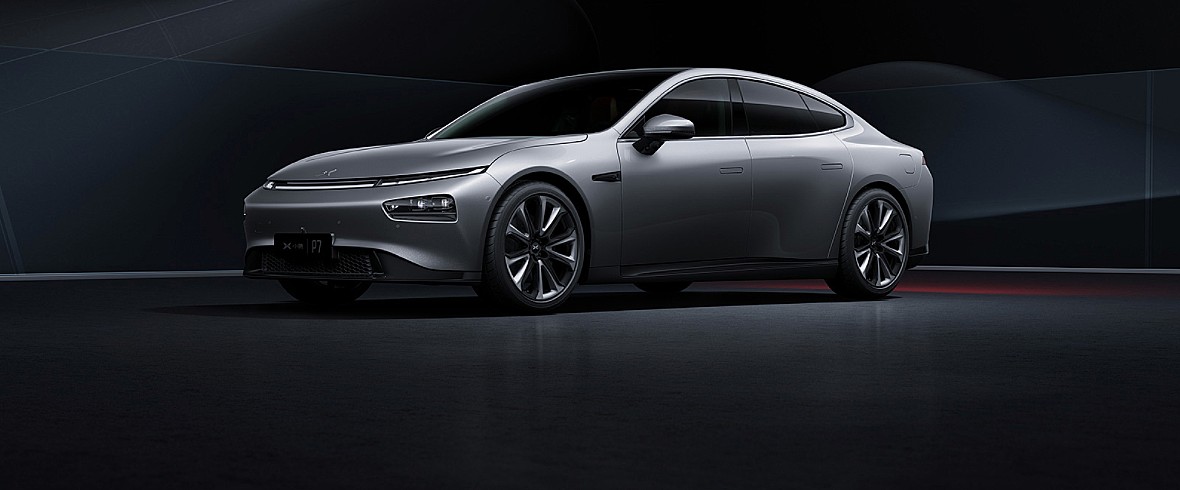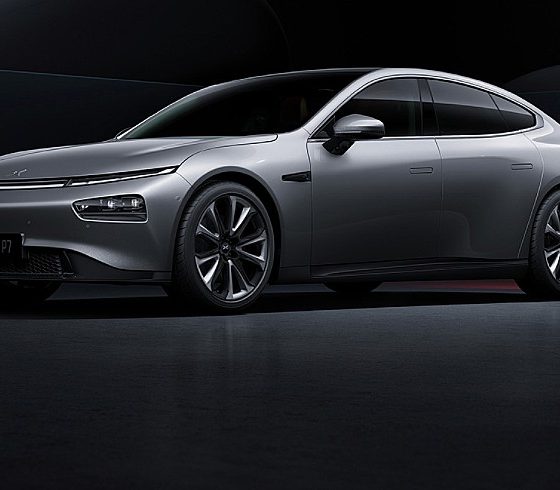Chinese electric car company Xpeng will use LiDAR sensors in its mass-market vehicles that are produced in 2021. The announcement from Xpeng came on Friday and deviated the company away from the current lawsuit that Tesla has against one of its former employees who took Autopilot sourcing code to the Chinese car company.
LiDAR is a strategy that utilizes light detection and ranging to determine self-driving accuracy. The strategy is advantageous in certain environments that offer sufficient lighting, but an automaker has never used it before now. The waves it uses to capture imagery is more ideal for higher precision driving, but it is costly. Elon Musk, Tesla’s CEO, once called the use of LiDAR “a fool’s errand,” and has consistently cited it as the wrong approach to developing self-driving techniques. “[They are] expensive sensors that are unnecessary,” Musk added when talking about the use of LiDAR to develop self-driving cars.
Musk’s opinions won’t convince Xpeng to shy away from using it, however. CEO He Xiaopeng said the LiDAR tech is “a breakthrough in popularising autonomous driving.” Xpeng said in a statement that using the technology will “significantly improve” the accuracy of its tech by holding the ability to recognize vehicles and other objects, making it safer and more defined on the company’s quest to a fully self-driving car.
The company’s announcement regarding the use of LiDAR counteracts with the current lawsuit Tesla holds against one of its former employees who went to Xpeng. Cao Guangzhi, a former Tesla Autopilot team engineer, was accused of stealing sourcing code from the Silicon Valley-based automaker and giving it to Xpeng for money. The lawsuit hit a standstill when Tesla was denied access to grand jury materials related to a former Apple employee, Zhang Xiaolang, who left the tech company for Xpeng.
But Xpeng’s adoption of LiDAR shows that Tesla’s sourcing code may not have been desirable to the Chinese automaker. Either that or the company couldn’t figure out what Tesla was doing with AP, as it is extremely complex and constantly improving thanks to the Neural Network. Musk stated in a Tweet on Friday morning that Xpeng has an old version of Tesla’s software, which is outdated, less complex, and not as functional as the current versions of AP. Additionally, Xpeng does not have the advantages of a Neural Network, which uses data compiled from every mile driven to improve its self-driving performance.
They have an old version of our software & don’t have our NN inference computer
— Elon Musk (@elonmusk) November 20, 2020
Musk made it clear that Xpeng was the only Chinese company that attempted to utilize Tesla’s AP source code, which was not open-sourced and was taken without the automaker’s consent.
Regardless, Xpeng is happy with using LiDAR as it believes it will offer a “nearly tenfold increase in computing power” and “centimeter-level accuracy.” While Xpeng will be the first car company to use LiDAR, it will not be the first autonomous driving entity to utilize the tech. Waymo uses the tech and is selling its own LiDAR systems as of 2019.
The expensive cost of LiDAR is sure to drive up Xpeng’s vehicles’ price, but the company did not want to indicate how much its 2021 vehicles that will equip the technology will set back consumers.
Originally reported by the South China Morning Post.

Elon Musk
Elon Musk’s X will start using a Tesla-like software update strategy
The initiative seems designed to accelerate updates to the social media platform, while maintaining maximum transparency.

Elon Musk’s social media platform X will adopt a Tesla-esque approach to software updates for its algorithm.
The initiative seems designed to accelerate updates to the social media platform, while maintaining maximum transparency.
X’s updates to its updates
As per Musk in a post on X, the social media company will be making a new algorithm to determine what organic and advertising posts are recommended to users. These updates would then be repeated every four weeks.
“We will make the new 𝕏 algorithm, including all code used to determine what organic and advertising posts are recommended to users, open source in 7 days. This will be repeated every 4 weeks, with comprehensive developer notes, to help you understand what changed,” Musk wrote in his post.
The initiative somewhat mirrors Tesla’s over-the-air update model, where vehicle software is regularly refined and pushed to users with detailed release notes. This should allow users to better understand the details of X’s every update and foster a healthy feedback loop for the social media platform.
xAI and X
X, formerly Twitter, has been acquired by Elon Musk’s artificial intelligence startup, xAI last year. Since then, xAI has seen a rapid rise in valuation. Following the company’s the company’s upsized $20 billion Series E funding round, estimates now suggest that xAI is worth tens about $230 to $235 billion. That’s several times larger than Tesla when Elon Musk received his controversial 2018 CEO Performance Award.
As per xAI, the Series E funding round attracted a diverse group of investors, including Valor Equity Partners, Stepstone Group, Fidelity Management & Research Company, Qatar Investment Authority, MGX, and Baron Capital Group, among others. Strategic partners NVIDIA and Cisco Investments also continued support for building the world’s largest GPU clusters.
News
Tesla FSD Supervised wins MotorTrend’s Best Driver Assistance Award
The decision marks a notable reversal for the publication from prior years, with judges citing major real-world improvements that pushed Tesla’s latest FSD software ahead of every competing ADAS system.

Tesla’s Full Self-Driving (Supervised) system has been named the best driver-assistance technology on the market, earning top honors at the 2026 MotorTrend Best Tech Awards.
The decision marks a notable reversal for the publication from prior years, with judges citing major real-world improvements that pushed Tesla’s latest FSD software ahead of every competing ADAS system. And it wasn’t even close.
MotorTrend reverses course
MotorTrend awarded Tesla FSD (Supervised) its 2026 Best Tech Driver Assistance title after extensive testing of the latest v14 software. The publication acknowledged that it had previously criticized earlier versions of FSD for erratic behavior and near-miss incidents, ultimately favoring rivals such as GM’s Super Cruise in earlier evaluations.
According to MotorTrend, the newest iteration of FSD resolved many of those shortcomings. Testers said v14 showed far smoother behavior in complex urban scenarios, including unprotected left turns, traffic circles, emergency vehicles, and dense city streets. While the system still requires constant driver supervision, judges concluded that no other advanced driver-assistance system currently matches its breadth of capability.
Unlike rival systems that rely on combinations of cameras, radar, lidar, and mapped highways, Tesla’s FSD operates using a camera-only approach and is capable of driving on city streets, rural roads, and freeways. MotorTrend stated that pure utility, the ability to handle nearly all road types, ultimately separated FSD from competitors like Ford BlueCruise, GM Super Cruise, and BMW’s Highway Assistant.
High cost and high capability
MotorTrend also addressed FSD’s pricing, which remains significantly higher than rival systems. Tesla currently charges $8,000 for a one-time purchase or $99 per month for a subscription, compared with far lower upfront and subscription costs from other automakers. The publication noted that the premium is justified given FSD’s unmatched scope and continuous software evolution.
Safety remained a central focus of the evaluation. While testers reported collision-free operation over thousands of miles, they noted ongoing concerns around FSD’s configurable driving modes, including options that allow aggressive driving and speeds beyond posted limits. MotorTrend emphasized that, like all Level 2 systems, FSD still depends on a fully attentive human driver at all times.
Despite those caveats, the publication concluded that Tesla’s rapid software progress fundamentally reshaped the competitive landscape. For drivers seeking the most capable hands-on driver-assistance system available today, MotorTrend concluded Tesla FSD (Supervised) now stands alone at the top.
News
Elon Musk’s Grokipedia surges to 5.6M articles, almost 79% of English Wikipedia
The explosive growth marks a major milestone for the AI-powered online encyclopedia, which was launched by Elon Musk’s xAI just months ago.

Elon Musk’s Grokipedia has grown to an impressive 5,615,201 articles as of today, closing in on 79% of the English Wikipedia’s current total of 7,119,376 articles.
The explosive growth marks a major milestone for the AI-powered online encyclopedia, which was launched by Elon Musk’s xAI just months ago. Needless to say, it would only be a matter of time before Grokipedia exceeds English Wikipedia in sheer volume.
Grokipedia’s rapid growth
xAI’s vision for Grokipedia emphasizes neutrality, while Grok’s reasoning capabilities allow for fast drafting and fact-checking. When Elon Musk announced the initiative in late September 2025, he noted that Grokipedia would be an improvement to Wikipedia because it would be designed to avoid bias.
At the time, Musk noted that Grokipedia “is a necessary step towards the xAI goal of understanding the Universe.”
Grokipedia was launched in late October, and while xAI was careful to list it only as Version 0.1 at the time, the online encyclopedia immediately earned praise. Wikipedia co-founder Larry Sanger highlighted the project’s innovative approach, noting how it leverages AI to fill knowledge gaps and enable rapid updates. Netizens also observed how Grokipedia tends to present articles in a more objective manner compared to Wikipedia, which is edited by humans.
Elon Musk’s ambitious plans
With 5,615,201 total articles, Grokipedia has now grown to almost 79% of English Wikipedia’s article base. This is incredibly quick, though Grokipedia remains text-only for now. xAI, for its part, has now updated the online encyclopedia’s iteration to v0.2.
Elon Musk has shared bold ideas for Grokipedia, including sending a record of the entire knowledge base to space as part of xAI’s mission to preserve and expand human understanding. At some point, Musk stated that Grokipedia will be renamed to Encyclopedia Galactica, and it will be sent to the cosmos.
“When Grokipedia is good enough (long way to go), we will change the name to Encyclopedia Galactica. It will be an open source distillation of all knowledge, including audio, images and video. Join xAI to help build the sci-fi version of the Library of Alexandria!” Musk wrote, adding in a later post that “Copies will be etched in stone and sent to the Moon, Mars and beyond. This time, it will not be lost.”










